
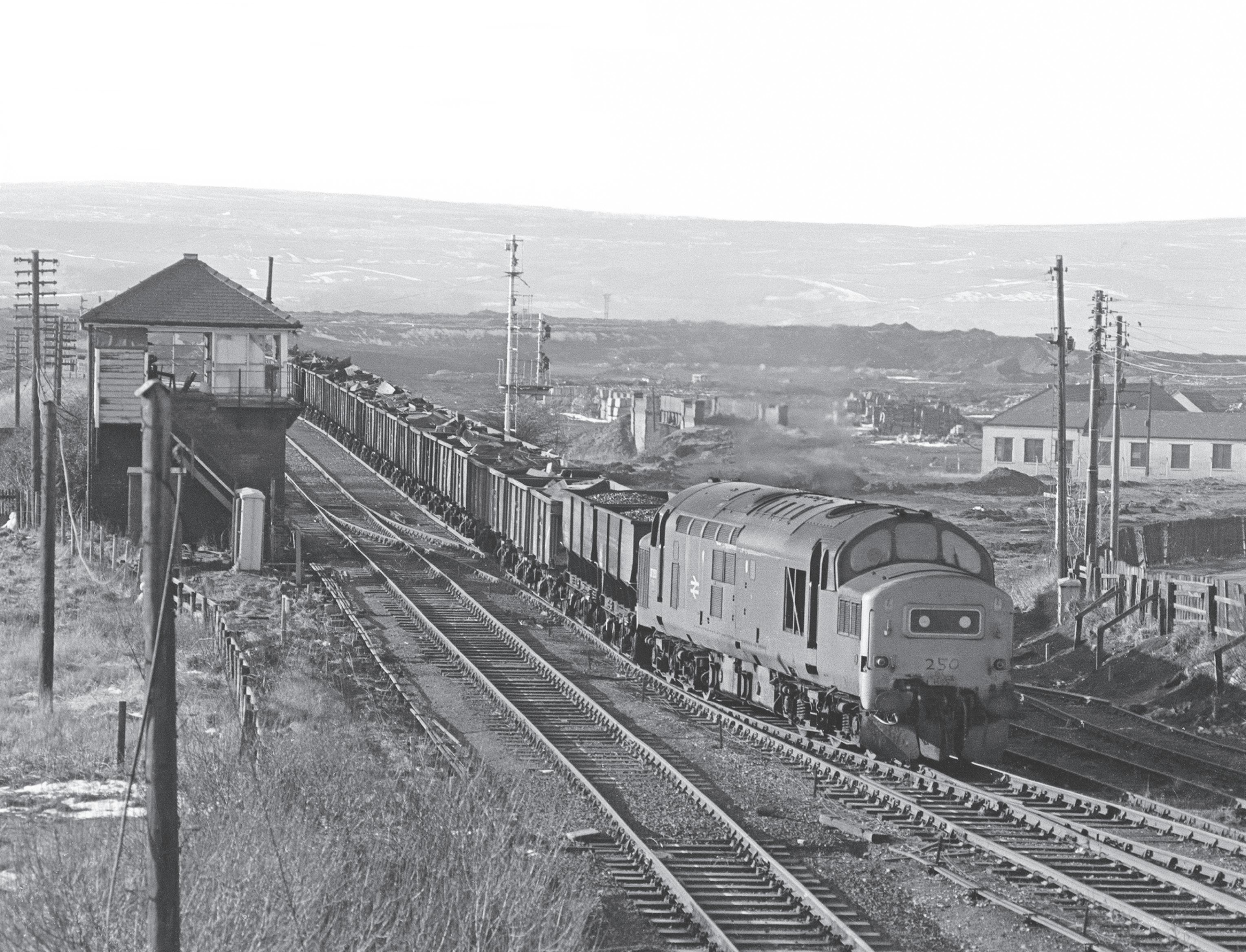



Oliphant and Colin Alexander
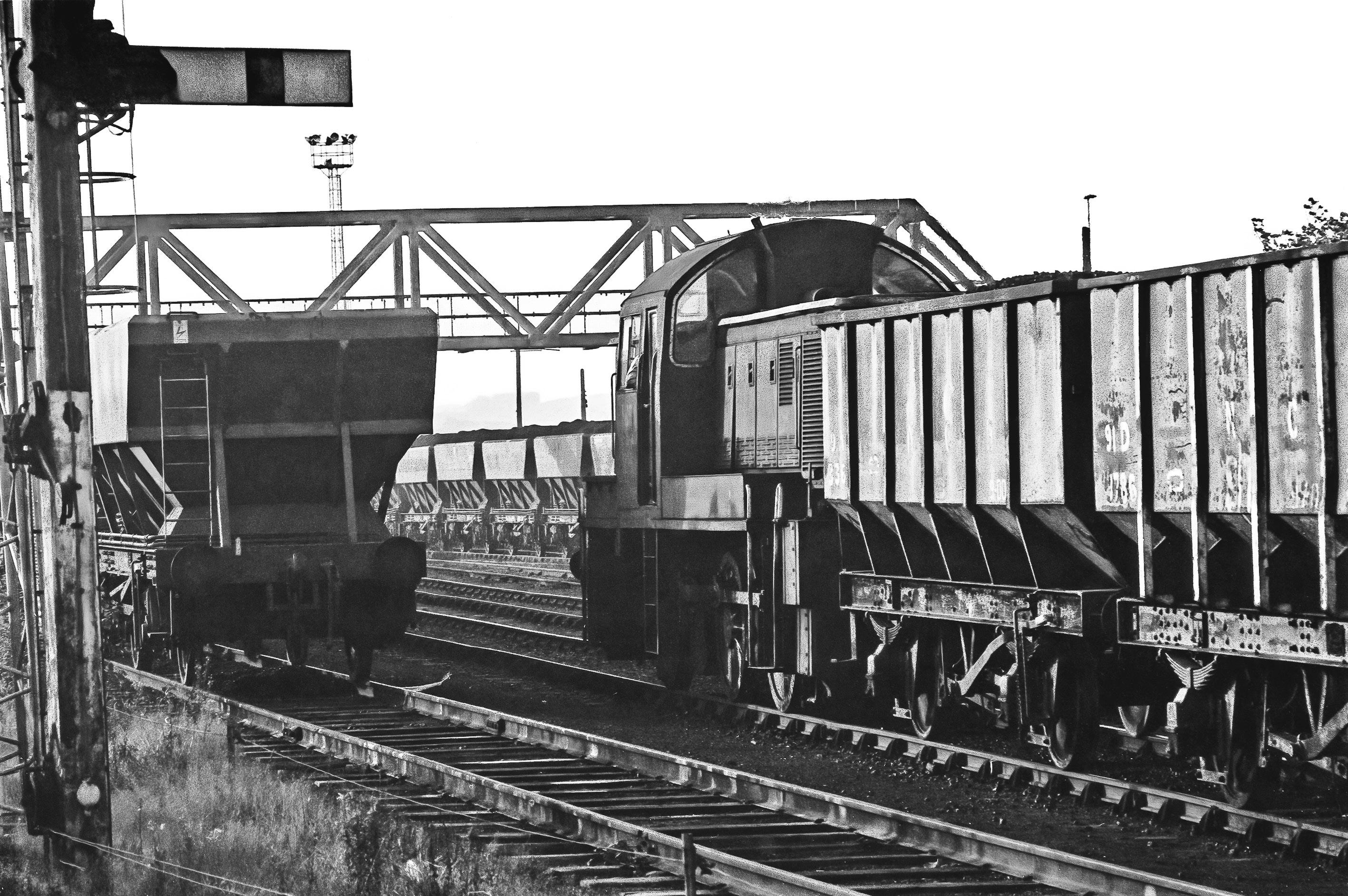
The Northumberland town of Ashington was known as the world’s largest coal-mining village. Its colliery railway system was extensive, with its own workshops and engine shed. It became home to several redundant BR Class 14 650hp diesel-hydraulic locomotives. This dramatically backlit image, taken 28th October 1982, depicts BR’s D9536 in its NCB guise as no.5, geometrically framed by a footbridge and semaphore signal. Today, while there is no trace of Ashington colliery, the refurbished buildings of nearby Woodhorn colliery now house a fascinating museum about the Northeast’s coal-mining communities and heritage.

Taken on the same day, this more conventional shot of NCB no.5 shows some of Ashington’s colliery buildings, pithead winding gear and more semaphore signals. As well as the interest generated by the presence of the former BR Western Region diesel-hydraulics, there was always a remarkable variety of rolling stock to be seen here, including ancient, multicoloured wooden-bodied coal hoppers. In steam days, the colliery also had its own passenger stock that was used to convey miners to and from surrounding villages for their shifts.

Newcastle-upon-Tyne is the regional capital of the Northeast and has preserved much of its historic fabric. It was the location of the world’s first locomotive factory, built by George Stephenson. John Dobson’s Central Station was famous for the diamond crossings at the east end, below the city’s Norman Castle Keep. At the west end of the goods lines that bypassed the station on 8th April 1983, Scottish Region Class 26s 26043 & 26015 double-head 7X30, a Leith to Derby pipe train. This train exchanged locomotives at Tyne Yard, ensuring that the locomotives were returned to Scotland and not ‘borrowed’ by another region.

West End boys. The west end of island platform 9 & 10 at Newcastle Central was the social epicentre of our teenage years. Unlike the modern scene, dominated by garishly liveried multiple units, we enjoyed a variety of traffic and traction. Overnight, there were several sleeping car trains, many of which included non-passenger vehicles. In this atmospheric nocturnal shot on platform 10, taken 8th April 1983, the station clock shows 23:10 as 40153 shunts parcels vans from platform 8 (far left) as part of 1E35, bound for London King’s Cross. Note the tail lamp and water hose on the platform near the locomotive.
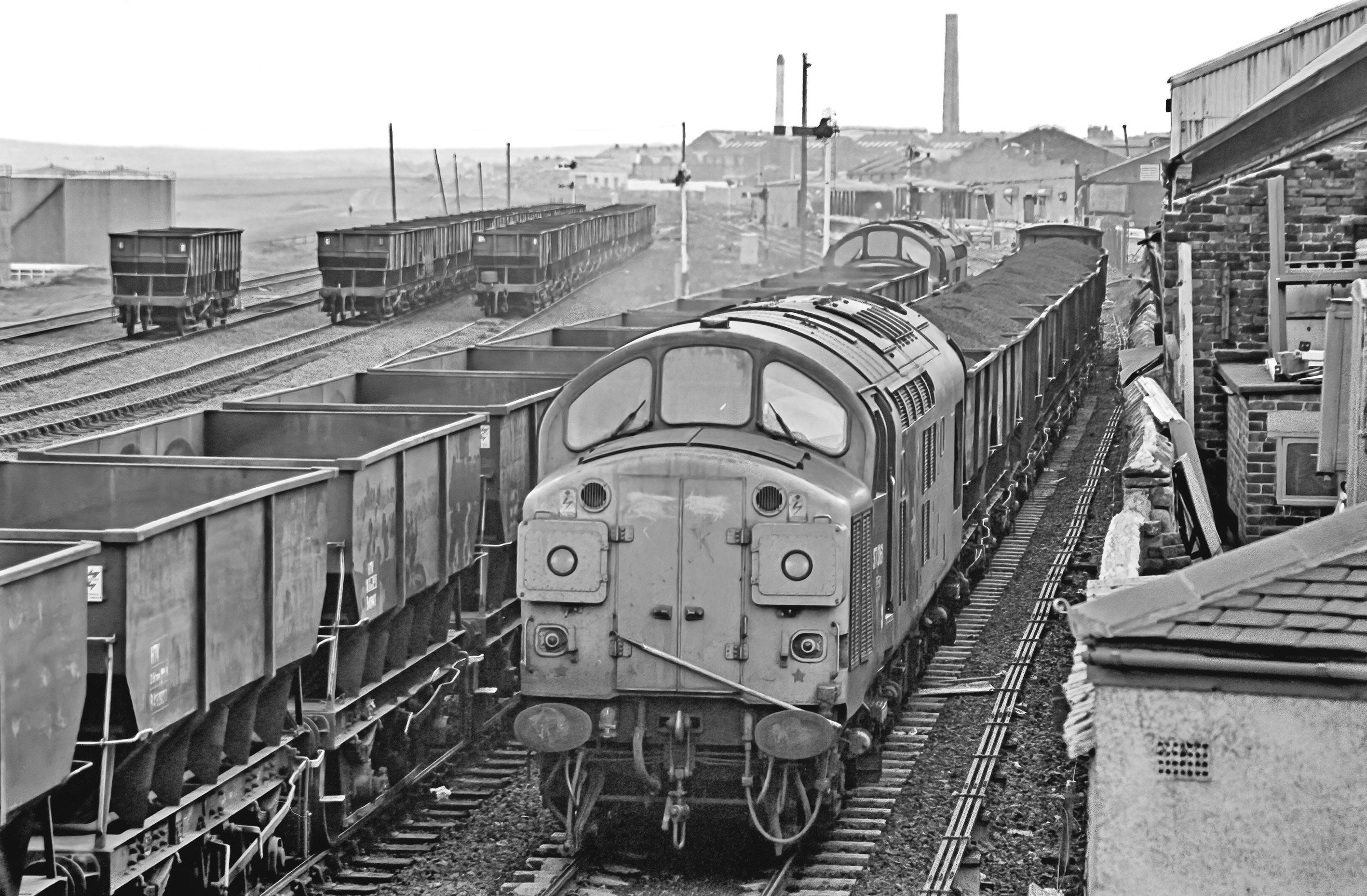
Viewed from Londonderry Junction signal box on 2nd March 1984, 37061, complete with shunter’s pole slung across the front, takes coal towards Sunderland South Dock, as classmate 37100 takes empties in the opposite direction. The miners’ strike began the following week and lasted a year. It would lead to three deaths, and bitter family feuds that would never heal. The eradication of coal mining would take place over the next few years, eroding the very foundations of the industry that created the world’s railways. The name of the junction derives from the Londonderry, Seaham & Sunderland Railway, which was absorbed by the North Eastern Railway. The Marquess of Londonderry was a major County Durham colliery owner.
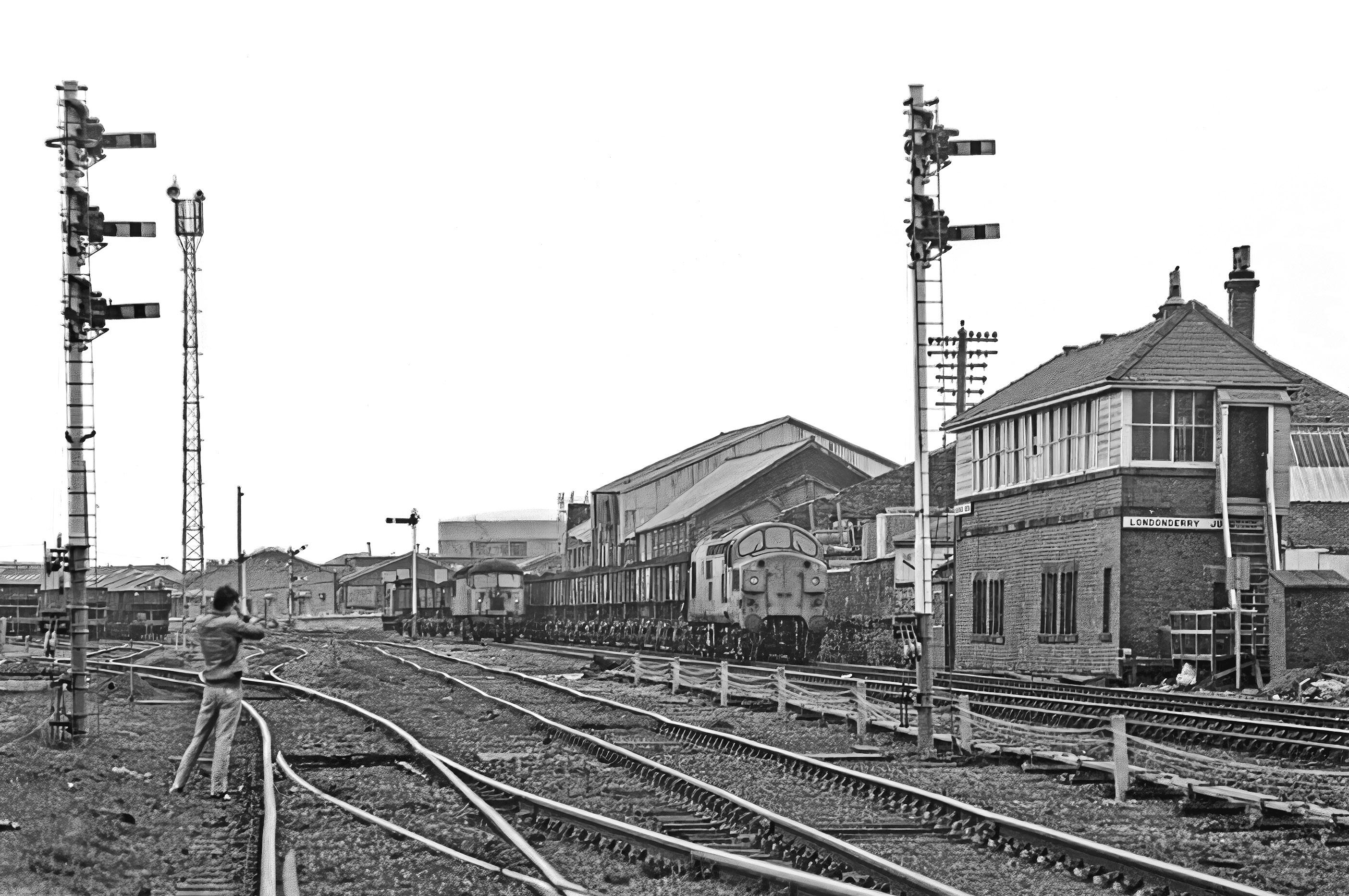
Nicely framed by matching arrays of miniature arm semaphore shunting signals, 37001 passes an unidentified Class 56 as it waits for the ‘board’ at Londonderry Junction, on 2nd March 1984. The ash ballast, signal wires and telegraph pole are all now history, just like the grand old signal box which closed in the year this photograph was taken. 37001 was the second of the class, introduced in 1960 as D6701 and scrapped in 2011 as 37707. Class leader D6700 became 37119 in the TOPS numbering scheme and is preserved in the National Collection.
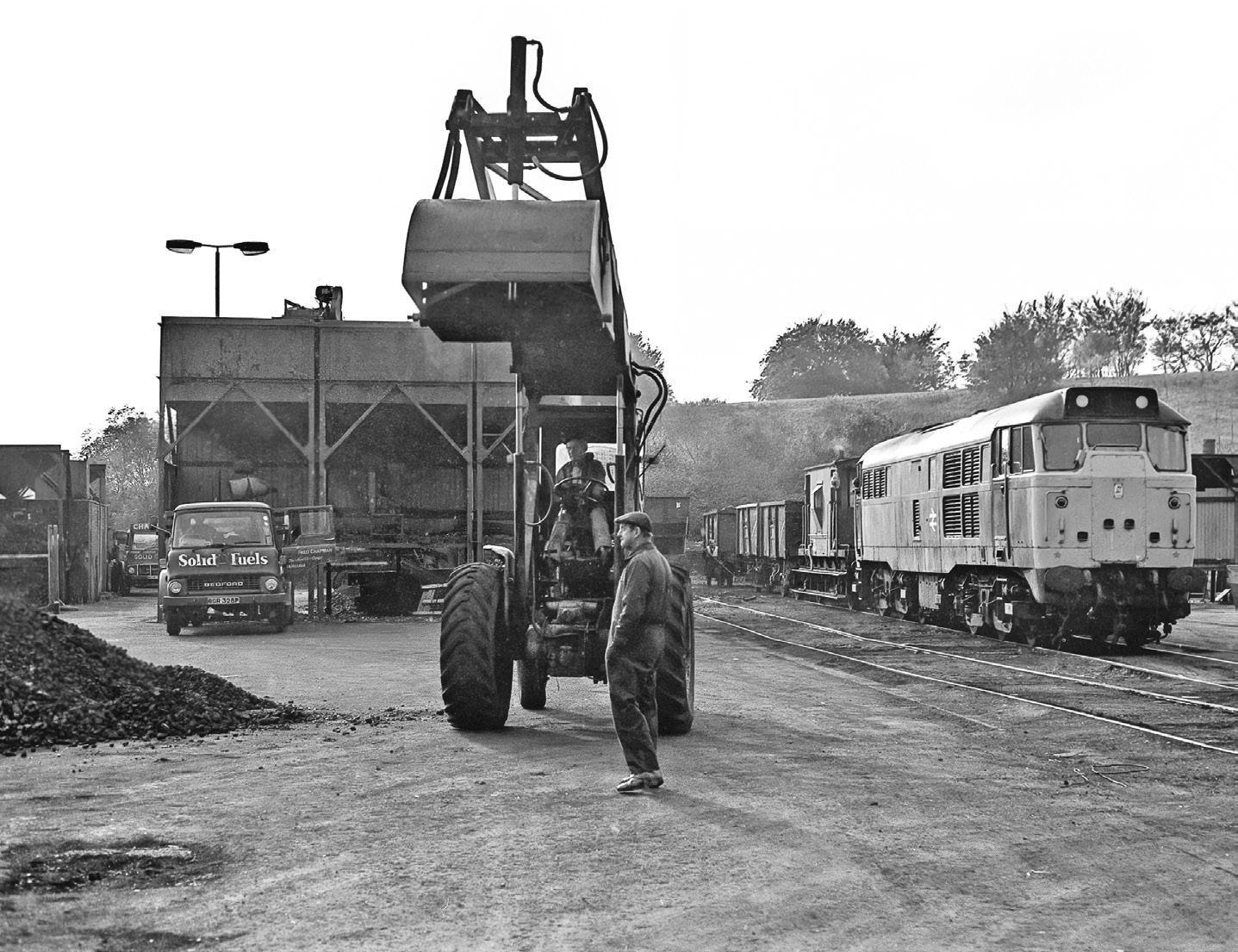

27th October 1983 gave a rare opportunity to photograph a normally nocturnal working in daylight, after a 6 hour delay caused by signalling difficulties. 31306 is shunting one of the last deliveries of household coal to Durham freight terminal. The yard, just north of the station on the west side, also handled scrap for Charlie Newton (whose house appeared in the film Get Carter ) and had formerly been the site of the locomotive shed and a brickworks. Beyond is Wharton Park, whose castellated terrace, intended for viewing the Norman cathedral and castle, provided a grandstand view of the station and viaduct, as seen in the shot of the Class 20s.
Approaching Durham from the north on 12th August 1982, 37062 heads a classic summer flow of empty grain hoppers from Muir of Ord to Doncaster. It will return with barley from the fertile fields of England’s eastern counties for the whisky distilleries of Scotland’s Black Isle to produce the water of life. These trains were trip worked from various locations in East Anglia to the marshalling yard at March before being forwarded to Doncaster, then Millerhill. It also served the maltings at Burghead, near Elgin. The distinctive blue-liveried bulk grain hoppers were built in the 1960s by Pressed Steel for British Railway Traffic who leased them to the Scottish Malt Distillers Company.
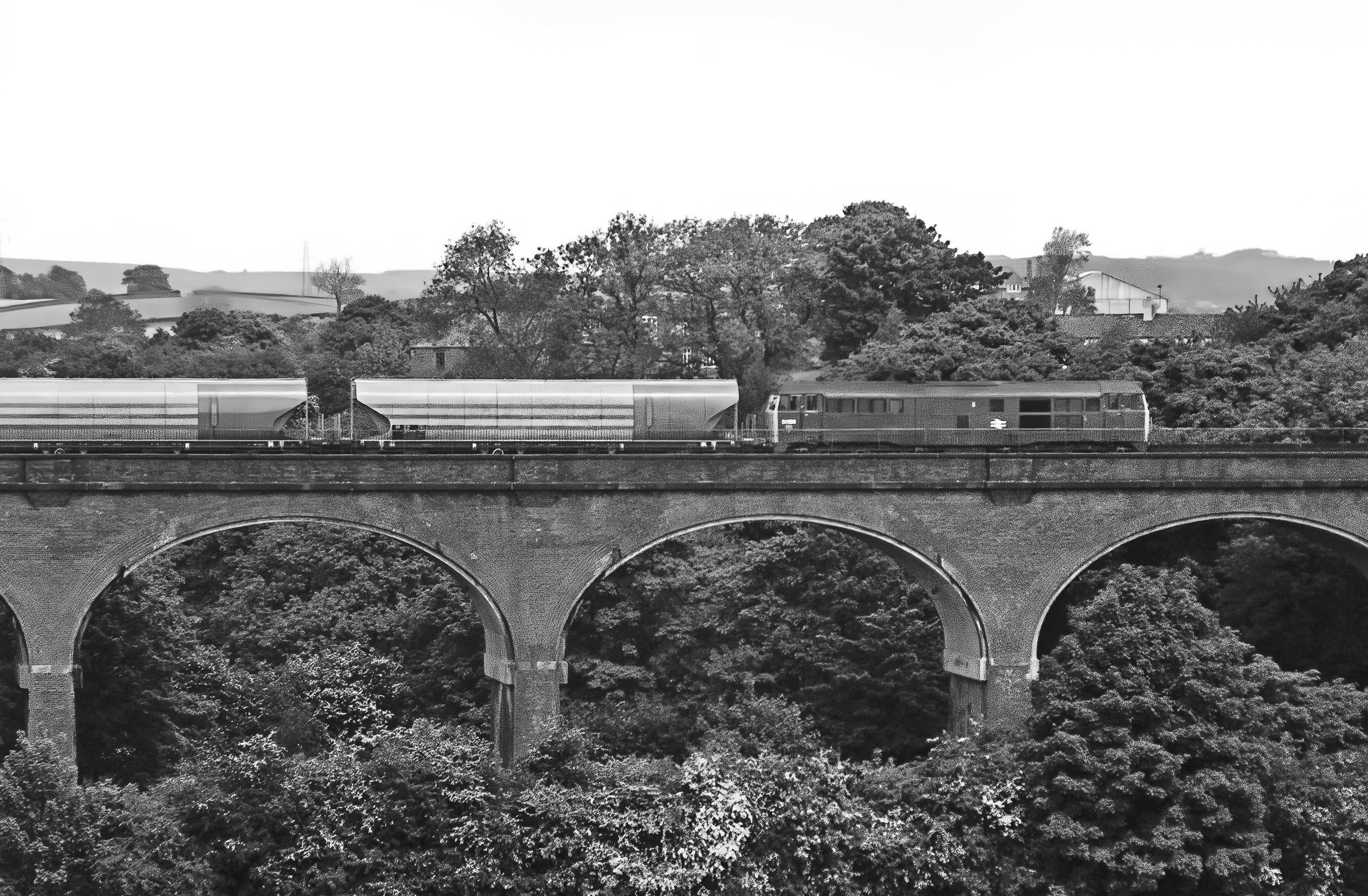
In 1983, the wagons in the previous shot were superseded by these French-built 80-tonne Polybulk bogie hoppers. They were some of the first since nationalisation to display private owner branding, such as Distillers Company (Cereals) Ltd. Despite this investment the grain traffic was lost to road transport in less than a decade. The wagons were later used to transport urea, china clay and powdered limestone. This summer 1984 broadside view shows 31183 crossing Relly Mill viaduct, south of Durham. It dates from 1897, replacing the original timber structure, the northern abutment of which remains today. South of the viaduct was the triangular Relly Mill Junction, with branches to Lanchester, Bishop Auckland and the Deerness Valley.

ISBN 978-1-913893-51-4

£13.50

Embark on a mesmerising journey through time and memory, where the click of a camera shutter captures more than just images—it preserves the essence of an era. In this enchanting volume, Craig’s lens becomes a time machine, whisking us back in time to the early 1980s to the smoke-blackened landscapes and bustling railways of Northeast England. From the coalfields of Southeast Northumberland to the industrial heartlands of Teesside, each photograph opens a portal to a bygone age. Feel the pulse of excitement as diesel locomotives thunder past, their engines echoing the spirit of an era on the brink of change. Through Craig’s masterful eye, we witness not just trains, but the soul of a region—a region shaped by its railways, its industries, and its people. With every turn of the page, we journey alongside Craig and his friends, soaking in the sights, sounds, and stories of a vanished world. This isn’t just a collection of photographs—it’s a tribute to resilience, a celebration of friendship, and a testament to the enduring magic of the rails. Join us on this unforgettable odyssey, where nostalgia meets innovation, and where every image is a window into a world we thought lost to time.